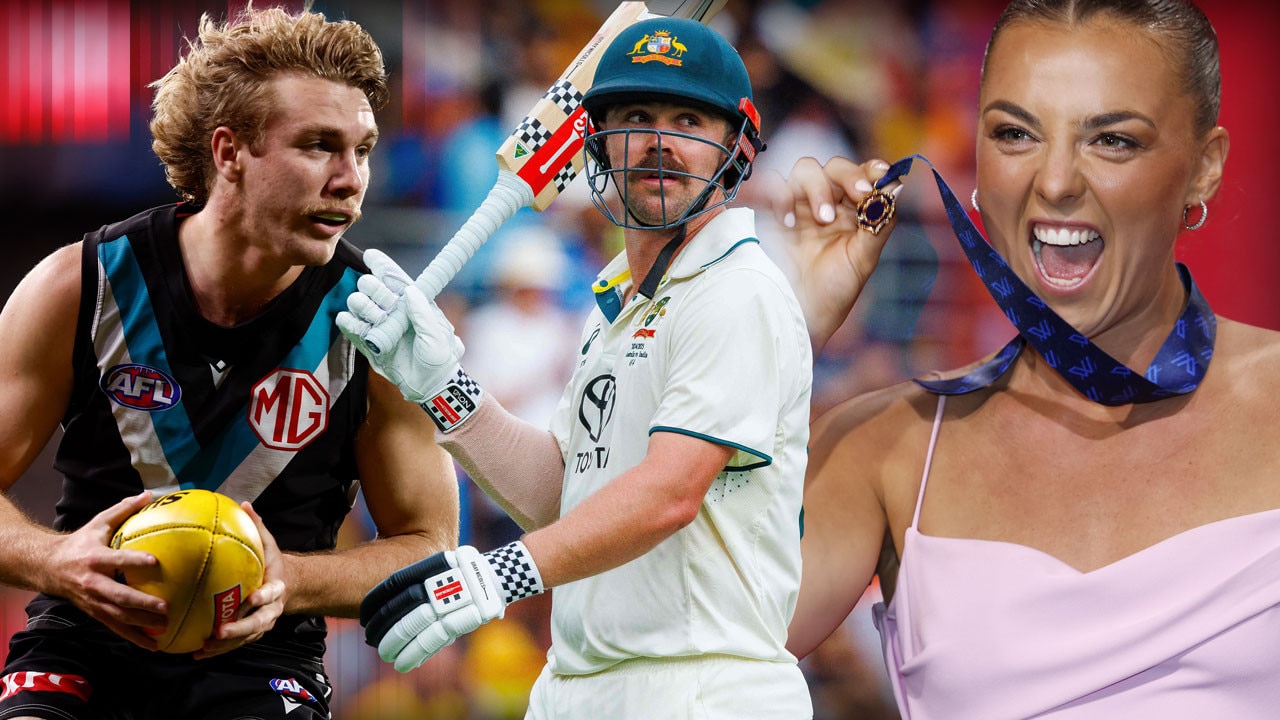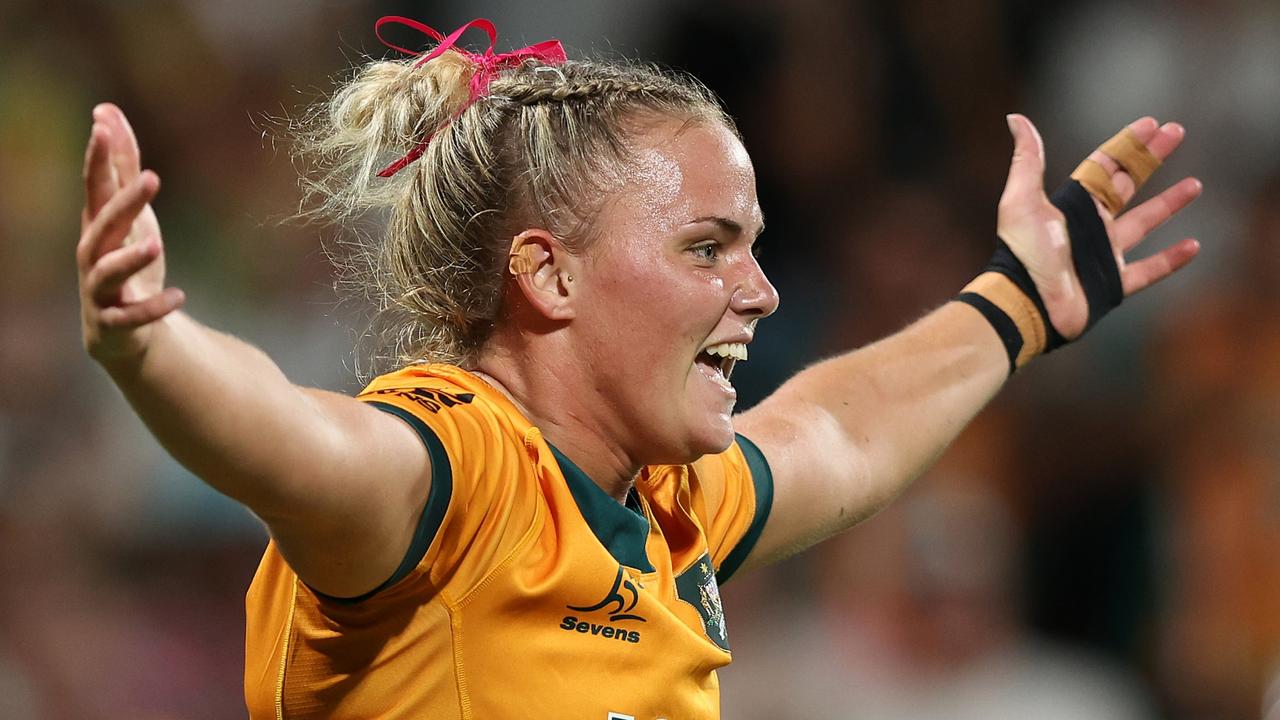Matildas star Sam Kerr the most popular footballer in the country
The high-flying Matildas team have become the ultimate crowd-pleasers, the darlings of Australian sport. And there is no Socceroos equivalent for Sam Kerr.
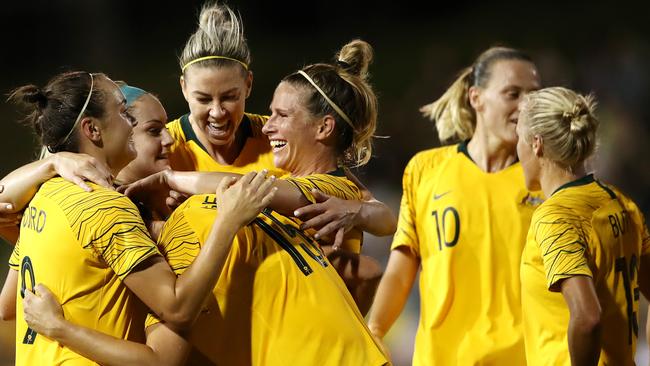
Women's sport
Don't miss out on the headlines from Women's sport. Followed categories will be added to My News.
Blame it on the backflip, or either of her feet.
But it says something about the sporting market when Sam Kerr shirts are more readily available in shops than those emblazoned with Aaron Mooy, Mat Ryan or Tom Rogic.
Unless they’re sold out, of course. Which is often the case.
Because, anecdotally at least, the Matildas may be more in vogue than the Socceroos.
Two months before the Women’s World Cup, the national women’s team have become the ultimate crowd-pleasers, the darlings of Australian sport.
Kerr, the 25-year-old face of Nike with too many accolades to poke a stick at, is the country’s most popular footballer. Full stop.
“There is no Socceroos equivalent of Sam Kerr,” said Daryl Adair, Associate Professor of Sport Management at the University of Technology, Sydney.
“Players like Aaron Mooy and Tom Rogic are well respected competitors in British football, but they hardly have the star appeal of Kerr.”
Kerr isn’t alone.
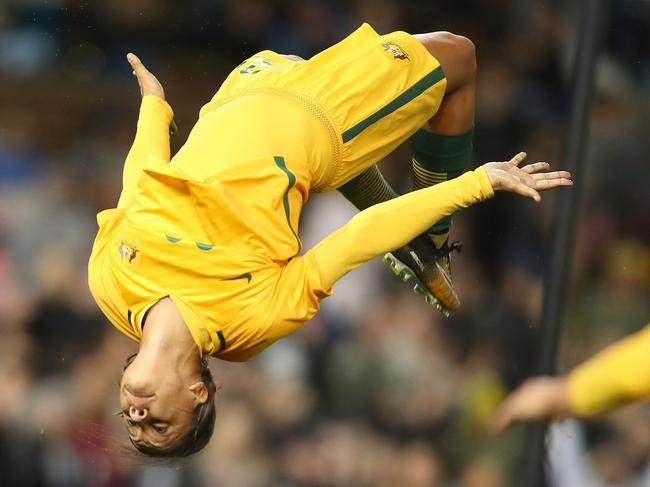
Even after the PR disaster of Alen Stajcic’s sacking, names such as Lisa De Vanna, Hayley Raso and Kyah Simon are outranking many male counterparts in the popularity stakes.
One element is the irresistible youthful relatability.
A YouTube video from the Rio Olympics catching Elise Kellond-Knight helping De Vanna drink from the right end of her water bottle feeds into that appeal.
Another integral factor is the brand of football they play.
Re-watch the W-League grand final between Sydney FC and Perth Glory for a masterclass by some of the world’s top female players.
Or today’s friendly against the United States.
“When it comes to national teams, Australians – like sports fans in other countries – are most attracted to winners, or at least teams that are highly competitive with the potential to win tournaments,” Adair said.
“The Matildas tick both boxes ... they also have a genuine star of the game in Sam Kerr and an attacking style of play that attracts fans.”
New coach Ante Milicic is in the unique position of having coached in both the Socceroos and Matildas set-ups, and was pleasantly surprised by what he encountered.
“They’re a good bunch of girls,” Milicic said.
“I’ve been involved in the women’s game only a short space of time and I’m learning more and more every day.
“When I got approached I watched many Matildas games against the better nations as well, and our girls definitely have quality.
“They’re moving forward and the game’s getting more popular. There’s a lot of young ones coming through as well so the future’s looking good.”
Foundations for the future weren’t built overnight, but much has occurred within the span of one generation.
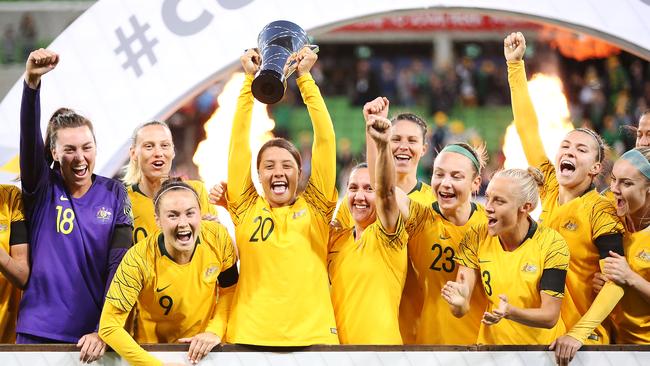
Veteran forward De Vanna, Australia’s all-time leading scorer, recalled how it used to be.
“You'd be lucky to have 10 people, and those 10 people were family members," 34-year-old De Vanna said, a few days before a capacity crowd packed Penrith Stadium to watch the first of two home games against Chile.
Even the past three to four years have been momentous.
While the Matildas were a raging success at the 2015 Women’s World Cup, their history-making quarter-final run generated significantly less media coverage than, say, the Socceroos’ Asian Cup triumph five months prior or their 2014 men’s World Cup campaign that ended at the group stage.
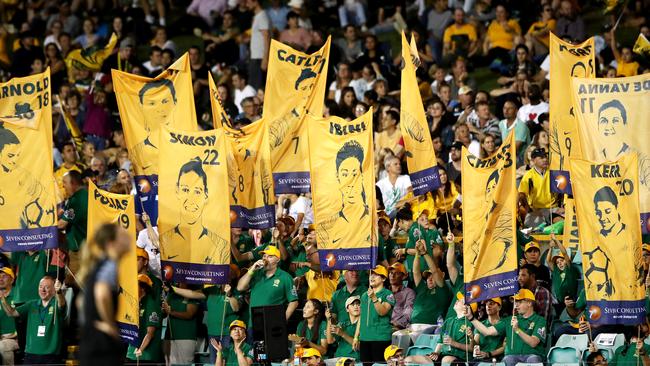
Skip forward a couple of years and tickets for home friendlies have sold like proverbial hotcakes, just like the copious jerseys bearing the numbers of their favourite female stars.
Can’t get ahold of one? Do a simple DIY job on an old Lucas Neill shirt. Then, if Kerr gets wind of it, she might get you on the field after the game and give you a real one off her own back.
The real barometer of equality might be when the public is ready to criticise the Matildas for poor performances on the same level they would the Socceroos.
But, for now, accessibility drives engagement.
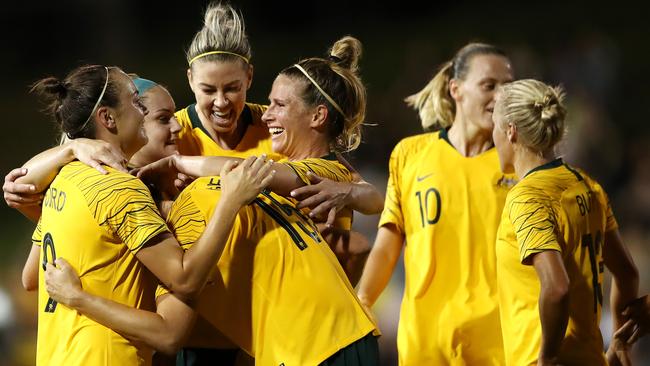
And much like Tim Cahill throughout his entire career, the Matildas are content to stand for hours signing autographs and taking selfies without a shred of self-importance.
They still earn a bucketload less than the Socceroos, but Football Federation Australia continues to bank popularity dollars each and every time they play.
By the time the World Cup comes they should be rolling in it.

